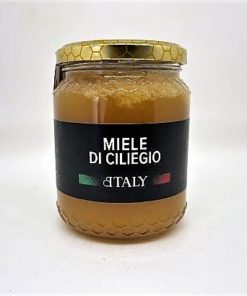€25,00
Artisan Amaretto Panettone 750 grams
Out of stock
Panettone, undisputed king of the Christmas table, is undoubtedly one of the most famous cakes in traditional Italian gastronomy. In every Italian household, it is the equivalent of the Christmas tree or the garlands over the fireplace. It absolutely cannot be missed as dessert to conclude Christmas Day lunch on December 25.
It is of Milanese origin and has been referenced in testimonies dating back to the 15th century. During these times, on Christmas Day, it was customary for bakers to give their customers a gift of white bread (a privilege only for the rich) or sweets, filled with butter, honey, and raisins. It was a luxury bread, in Milanese, a “pan de ton”.
The origin of the panettone is shrouded in mystery so much so that it has become the basis of many legends. One such story attributes the origin to a cunning chef, known as Toni, who was in service at the court of Ludovico il Moro when he saved Christmas lunch by replacing a burnt cake with this easy to prepare bread (the only ingredients he needed were ones found in the pantry: flour, butter, eggs, candied citron and raisins). His experiment was a success among the diners at court and the cake remained famously called, “el pan de Toni, “or the bread of Toni”.
The modern day recipe of panettone is not so different from that used by Toni. The ingredients remain few and simple, only those necessary to produce one of the most classical cakes in Italian cuisine. Now spread throughout all of Italy, the panettone is often enriched with new, gourmet additions such as almonds, chocolate, varied citrus zests and other dried fruits and nuts. The panettone is a cheerful cake to be shared in good company; a slice should be enjoyed after a meal and can be eaten as is or accompanied with the addition of whipped cream or sweetened mascarpone.
It is also a perfect pairing with sweet wines such as Moscato or Passito and even with Spumante for a festive midnight toast to the New Year.
| Weight | 1,0 kg |
|---|---|
| Region of origin | Piedmont |
| producer | C. P. A. di Carrozzino Massimo |
| Zona di produzione / lavorazione | BISTAGNO (AL) |
| packaging | Plastic packaging and then customized BTALY carton outer packaging. |
| Main ingredients | WHEAT FLOUR '00', BUTTER, sugar, fresh EGG yolk, honey, vanillin, salt, bitter ALMONDS, candied orange peel, natural YEAST. |
| appearance | Cylindrical shape with rounded dome on top |
| color | golden ocher yellow |
| smell | MAY CONTAIN TRACES OF SESAME |
| Taste | sweet |
| allergens | 00' WHEAT FLOUR, BUTTER, EGG, ALMONDS, YEAST. |
| conservation method | out of the fridge, room temperature, dry |
| designation | Tq.I.P. |
| Notes | produced in a laboratory where nuts are also processed. |
| Recommended pairings | Egg and mascarpone based creams. Sweet, sparkling and passito wines |
| smaltimento | Plastic packaging and outer carton packaging, packaging in plastic collection and outer packaging in paper collection |
| Expiration date |
Nutritional values
NUTRITIONAL VALUES PER 100 G:
ENERGY VALUE 1705 kJ / 407 kcal
PROTEINS 8 g
FATS 19 g of which saturated fatty acids 8 g
CARBOHYDRATES 50 g of which sugars 28 g
SALT 4 g
The Producer
It started with a croissant…the story of a pastry chef of excellence
The story of Massimo and the pastry shop (more specifically the pastries) could be defined as a matter of love at first sight. It all started by chance, on a morning like all the rest: perhaps your alarm goes off, you have to go to school, and the only motivation you can find is in the croissant of your trusted pastry shop. This is how the story began, at Courmayeur, in Roberto’s shop. Massimo would stop by every day before school for a croissant. One day, the owner asked for a hand moving a big tray of freshly baked croissants. From that day forward, Massimo would find himself giving a hand in the shop during his free time or summer vacations. Without even realizing it, he began to learn the tricks of the trade and it soon became his passion and his career. During that summer of middle school, he not only learned the basics and the ins and outs of pastry that fascinated him so, but he also acquired something much more special as he gained a new father figure in the form of his mentor, Roberto.
Massimo had humble beginnings, starting from the bottom as an apprentice. Consequently, he maintained his training and later went on to study at the Etoile pastry school in Veneto and continues to frequent courses to this day in his quest to constantly better himself and his techniques.
He is ever aware of the importance of practice and experience and so finds the opportunity to work here and there, accumulating new knowledge in his suitcase. He has worked as a pastry chef in restaurants in big European cities, such as Paris. Through this experience he has had the occasion to make pastries for several heads of state (such as the Italian president, Cossiga and the French prime minister Mitterrand) and even made a delightful fruit tart for Pope John Paul II while on vacation in the Aosta Valley.
In 2016 he decided to stop and begin his own business, thus creating “Pasticceria da Massimo” in Bistagno, a town in the territory of Alessandria, where in his laboratory his inspiration allows him to create and experiment with new things, while always preserving tradition and the exigencies and tastes of his clients.
Some say pastry is an exact science, like Chemistry, but for Massimo it is not so. His only limits are precision and quality, and for the rest he is guided by passion, experience, intuition and a touch of genius and by natural and local ingredients, such as the round Cortemilia hazelnut that smells of tradition, genuineness, and home.
In 2020 his pastry shop became prized as an Italian Excellence and was mentioned in local and national newspapers as a stop in Bistagno not to be missed. His laboratory, especially during the holiday season, organizes short pastry courses for clients and friends who wish to learn something new by taking peek into the world of pastry.
Among the products that we offer, one can find great classics of the Italian pastry tradition: the “brutti e buoni” literally translated, “ugly but good”, a traditional, irregularly shaped Piedmont cookie; the “baci di dama” literally translated, “Dame’s kiss”, a treat for hazelnut lovers; and last but not least, the panettone, undisputed king of the Christmas table, with four gourmand varieties to try. What’s more, the panettone can also be used as a versatile base for many other desserts. The pastry chef advises to use the hollow version as an alternative base for tiramisu.
To conclude, a small piece of advice which describes how passionate this pastry chef is for his job. If you stop by the pastry shop for a tray of pastries, please, treat them nicely and do not squish them!
P.S. He was an amateur weightlifter, so be careful and take his advice!
Production area
The pastry shop from Massimo, is located in Bistagno (AL) small Piedmontese town located in the Alessandria area.
The town was founded in medieval times as a fortified bulwark on the road that connects the town of Savona to Acqui Terme. Bistagno, starting from the historical center that still today presents the ancient triangular plan, develops following the banks of the Bormida.
The typical products of the river valley in the hinterland of the town, where there are several farms, are hazelnuts, goat cheese and wine.













